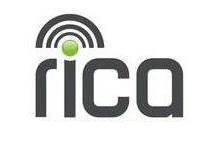.png?width=900&name=Service%20best%20practices%20-%20what%20users%20should%20expect%20from%20their%20ISPs%20(1).png) Automated voice response (AVR) is a self-service telephone system that interacts with the caller and routes calls to relevant recipients using voice or touch-tone key selection without input from another human.
Automated voice response (AVR) is a self-service telephone system that interacts with the caller and routes calls to relevant recipients using voice or touch-tone key selection without input from another human.
The number a caller uses when dialling your number, an Direct Inbound Dialling (DID), is the contact point. It is through the DID that the AVR connects to callers. An AVR system can be ordered to manage a specified number of calls simultaneously, depending on the size of the solution.
How an AVR works
AVR helps a caller navigate a telephone system using dual-tone multifunction, sometimes referred to as DTMF tones (the touch tones your phone keypad makes when you press it). Some use voice recognition and artificial intelligence to respond to callers. Although it is present in other markets, voice recognition is currently not feasible in SA. This is because of the different accents we have in English, and that's before you get to the myriad of formal and informal languages. The AI would just get lost in conversation.
An AVR can be used in conjunction with one, or combinations or of the following components:
1. A recorded message
2. On-hold music
3. On-hold advertisement/information
4. A system that directs you to the different departments or functions listed
There are use cases of AVRs, namely:
1. Outbound telephone systems (eg an autodialer): which make calls to human receivers to deliver a message or to connect to another human. Outbound automated phone systems use a bulk input of telephone numbers to place calls and listen for answers. After the system detects a human response, it either plays a pre-recorded message or connects the dialed party with an
available human agent. Governments usually use them to make announcements or emergency messages. Private companies typically use them for marketing messages or to conduct surveys.
2. Inbound systems: which answer calls from humans and interact with the callers to fulfill their needs or to direct them to a human recipient. The systems typically play a message asking the caller to respond by pressing a button or speaking. Then the automated phone system will play some information, route the caller to another prompt or connect the caller with a human operator, depending on their input.
3. Hybrid systems: can make and receive calls, so they have the characteristics
features from both inbound and outbound systems.
Inbound AVR systems are the most commonly known, for the duration of the article
we will focus on the inbound system types of AVRs.
Benefits of an AVR system
- It reduces the dependence on a switchboard operator. Although small companies may eliminate the role, larger companies will still need an operator to direct callers who are not sure where to go or those who want to go to departments or staff that is not included in the options. Nonetheless, the workload will be substantially less for the human operator.
- It decreases the call congestion at the switchboard, since some or most callers will be able to self-service efficiently.
- It increases inbound call capacity. The company will be able to receive more simultaneous calls and handle them more efficiently.
- It effectively directs each call to the relevant department
Potential disadvantages of an AVR system
- Some people don't like to deal with AVRs as they would prefer to deal with a human.
- Using long, elaborate messages can deter clients from calling or cause them to make an incorrect selection.
- Long messages can also create frustration and force callers to randomly choose an option, which would lead to the wrong channel, forming unnecessary traffic to the wrong department and potential congestion. This will frustrate everyone.
How to determine the options to include on your AVR
Your AVR setup can determine or influence your business success. The key is usually in how you organise the options:
1. Keep the number of your options as few as possible. It will be easier for customers to remember the options and navigate your telephony.
2. Use branching intelligently, over or under usage of branching can be annoying. Design your navigation path to be clear, concise and short.
3. Always have the option to speak to a human being. Initiate human intervention early on. People like to talk to people; we are social creatures.
4. Don't use convoluted mechanisms – keep it simple
5. If you use on-hold music, keep to a generally accepted style of music. Avoid music with lyrics, and keep it positive and upbeat. Not everyone has the same taste, so keeping the balance can be difficult. The reason you don't want lyrics may be that if there is a glitch and the record replays a specific out of context lyric, it can make things awkward.
6. If you do make use of advertising, ensure it is universally informative, non-repetitive and not aggravating. Do not use the waiting customer as an opportunity to make a hard sell; it will annoy them.
7. Make sure you have enough call capacity to handle concurrent incoming calls. Call capacity is dependent on the size of the solution, which can usually be set by contracting the right product level. At Premitel, you can choose your capacity from a base of three and increase it from there if you like. You can get an increased economy of scale at surprisingly little increase of the monthly
fees.
In summary, try to keep the options short. Avoid confusing the customer and stretching their
patience. As a rule of thumb, keep each branch with three to four options. If the chain is too
long, then the caller's patience can run out. Retain sufficient personal interaction options.
Best practices for setting up the capacity of your AVR
1. Review your call records to determine how many calls your switchboard operator handles and evaluate how many concurrent calls are taken.
2. Look at the number of extensions and determine the frequently asked for departments.
3. Using the above information, your AVR capacity should be between 20 and 50 percent of the number of phones served on the system.
4. It would help if you considered using DID on your extensions so that you lessen the number of calls through the AVR.
An AVR is versatile and practical for small and large organisations. You can use it to manage traffic to departments or provide information. It can also be connected to hunt groups and managed call queues, so a caller is more likely to get the service they need.
Looking for a reliable and customer-centric solutions. Contact us today for home and business solutions.







